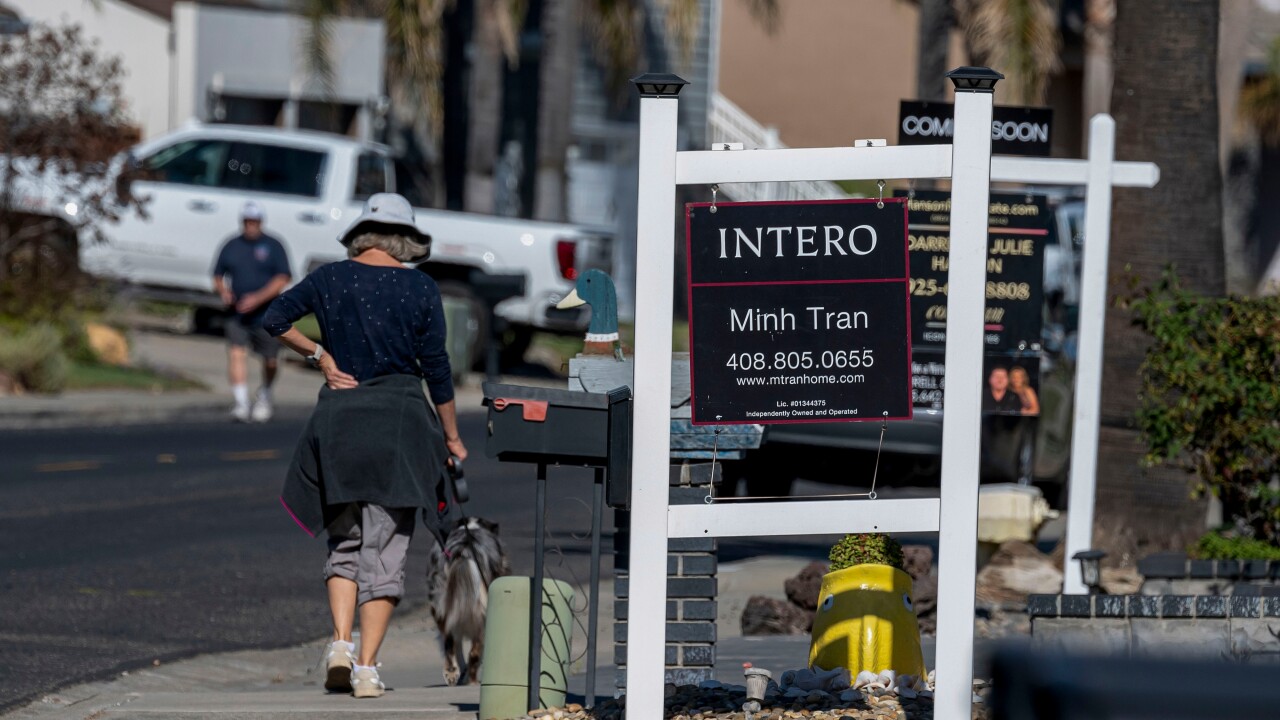In June, home price growth cooled to its slowest pace in two years, with over a quarter of top U.S. markets posting annual price depreciation, according to the latest data from Intercontinental Exchange.
The rate of annual growth decelerated to 1.3% across the country in June,
Over a quarter, or 27 out of the 100 leading markets, posted year-over-year price depreciation. At the same time, 33% of markets saw home values dip by at least one percentage point from recent highs, ICE said.
While current numbers may offer some encouraging signs for aspiring buyers previously frozen out of the market due to
"There are two competing forces in the housing market right now," said Andy Walden, ICE'S head of mortgage and housing market research in a press release. "Increasing inventory levels are helping to make homes more affordable, but prices are falling in an increasing number of markets, and homes are taking longer to sell, which could make homeowners reluctant to list."
Inventory growth also varied across the country with the South and West seeing higher supply levels and softening prices. In California, seven out of the top 10 markets saw home values decrease year over year. On the other hand, the Northeast and Midwest saw continued price growth, although at a moderating pace.
Single-family home prices moderated to growth of 1.6% year over year.
Monthly changes also suggest further price moderation to come, ICE said. Prices came in virtually flat from May, increasing by a seasonally adjusted 0.03% from May.
What is causing home prices to fall?
Challenges to affordable homeownership from high prices and insurance premiums, have helped push purchase demand and prices lower in 2025. The current level of housing costs are exacerbated by mortgage rates, which have run well above 6% for close to three years and are unlikely
Whether current increased supply levels are enough to spur market activity remains a question mark, though, especially if owners are concerned about
Many existing homeowners still have little incentive to list their homes, particularly if their current interest rate is below 4%, a separate study from Bankrate found. With the
Bankrate also found a majority of 54% of current owners unwilling to sell their homes this year at any interest rate level.
"It's always hard to forget the past, especially when the past includes a memory as dramatic as all-time-low mortgage rates. Most Americans want low mortgage rates to come back," said Jeff Ostrowski, Bankrate housing market analyst.
"But keep in mind, mortgage rates plunge because something really bad is going on in the economy."
Where prices moved the most
Alongside California, other Sunbelt states experienced the greatest pullback in prices, with Cape Coral, Florida, posting the steepest annual decline at 9.3%, ICE's report stated. Three other Florida cities ranked among the top five, as Cape Coral, Deltona and Tampa joined by Austin, Texas.
On the opposite side of the coin, Northeastern U.S. cities saw the greatest rise in home prices over the past year, as Rochester, New York, led the country with an 8.1% increase. It was followed by three Connecticut markets, Hartford, Bridgeport and New Haven, with 7.3%, 7.2% and 6.8%, respectively.





